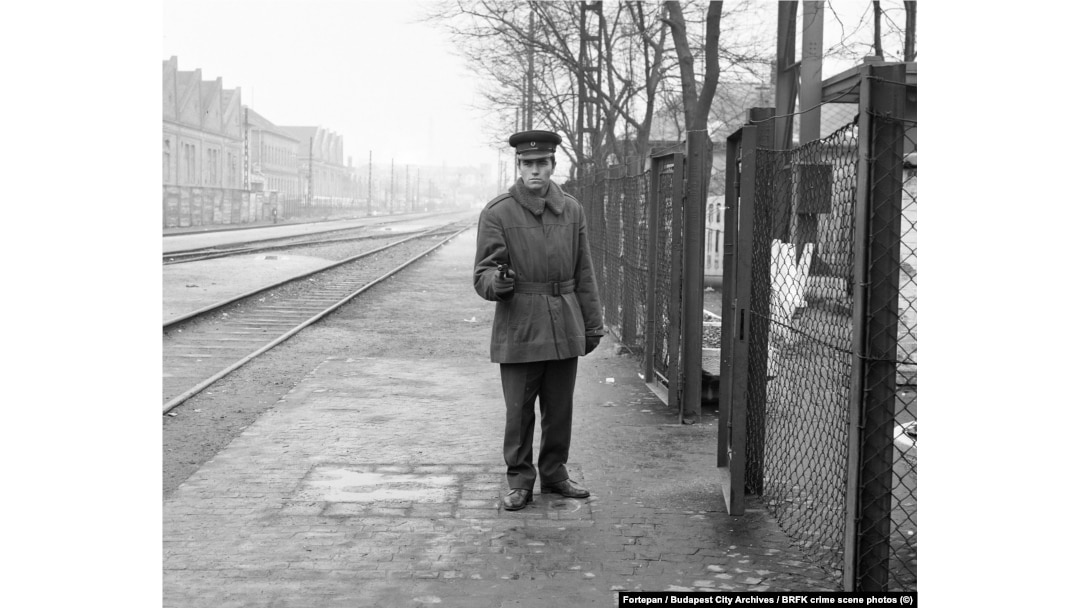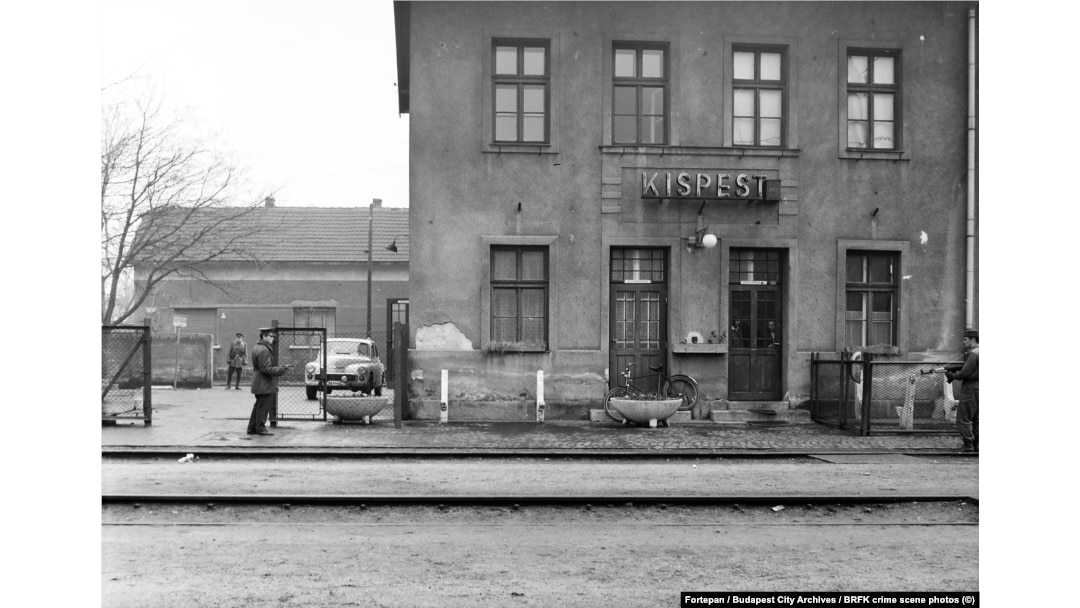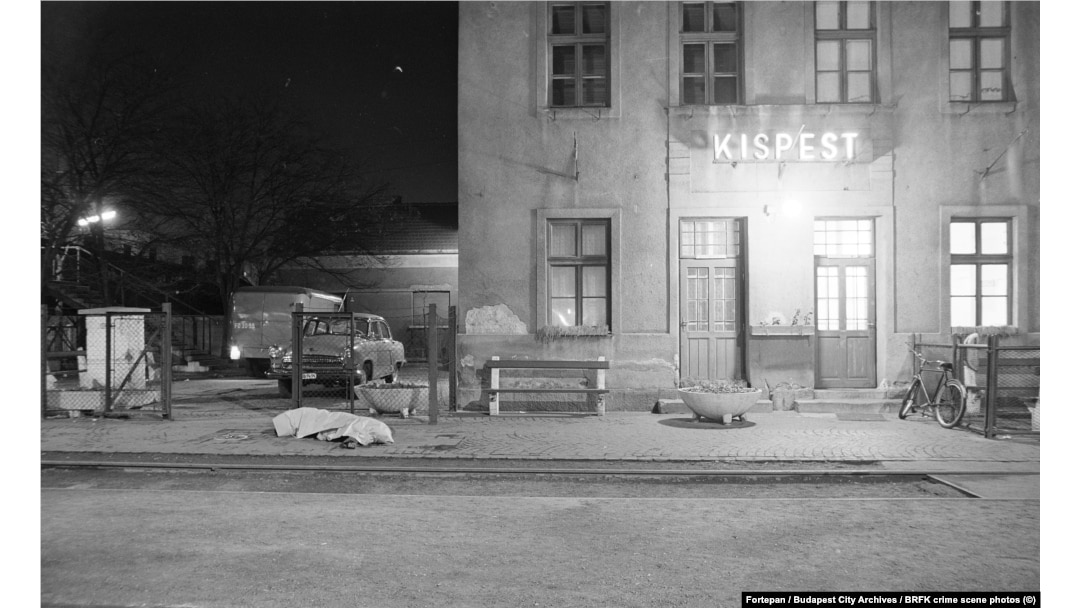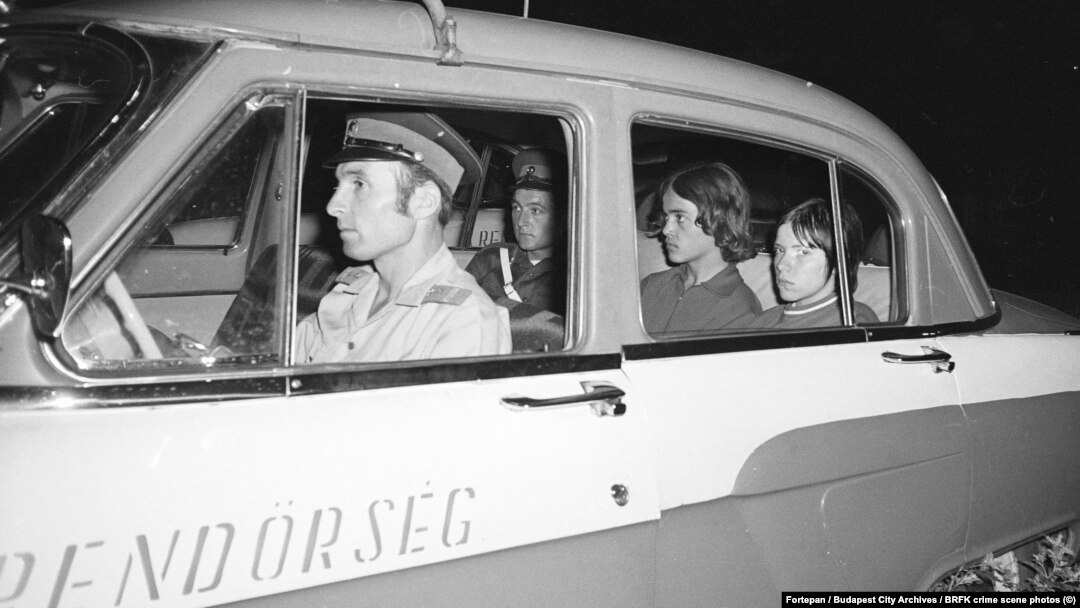
The image above, of a policeman recreating a crime scene outside a train station in Budapest, is one of 1,000 photos published this week by the Hungarian photo archive Fortepan that were never intended to be seen by the public.

The same policeman as seen in the previous photo points his pistol at another uniformed man holding a Kalashnikov.
The images are the work of anonymous police photographers tasked with capturing the aftermath of crimes as serious as murder, and as petty as theft, between 1971 and 1972, during the long rule of communist leader Janos Kadar.

A photo of the same train station as in the previous two photos that shows a body lying under a sheet
The photo negatives were stored in the Budapest City Archives and had not been published until Fortepan scanned and released them.
A detained man stands inside a chalk outline at the recreation of a crime scene in Budapest.
None of the images came with explanatory captions.
The aftermath of a car crash
Fortepan’s founder Miklos Tamasi writes that the series of images is unique, in part, for the humdrum areas of the Hungarian capital that the photos show, which were ignored by most photographers of the time.
A broken shopfront window after an apparent smash and grab
“In the pictures, parts of Budapest that are rarely or never seen at all appear,” Tamasi writes. “The world of the suburbs and peripheral districts.”
Street graffiti that says, “Russians get out of here, 27 years was enough!” The scrawled message references the ongoing presence of Soviet troops in Hungary following the Red Army’s capture of the country in 1945.
Of all the various crimes and accidents the photos show, Tamasi says, “particularly significant are the images of political graffiti, which were photographed by almost no one other than the police.”
“Our daddy Kadar is a horse f***er,” scrawled on a wall in Budapest. Communist party leader Janos Kadar’s 1956-88 reign opened with bloody repressions but ended with relatively few restrictions compared to other communist countries of the era. Some Hungarians referred to the authoritarian ruler as “Daddy Kadar.”
Messages such as this were photographed and investigated by the authorities of the time.
Small swastikas painted on the windows of a booth on the waterfront of central Budapest
Punishment for political messaging in the police state could result in lengthy prison terms.
“Police terror” scrawled on a stone ledge
Gyorgy Kerenyi, a senior journalist with RFE/RL’s Hungarian Service, recalled the story of his wife’s cousin, a soldier at the time, who was caught by police in the act of writing “Don’t teach to kill if you want to live” -- a line from a punk song of the era.
“There was a trial, but he was lucky” Kerenyi says, and the man avoided jail time. “It happened at the beginning of the 1980s in a much softer climate than before.”
A confiscated bag filled with liquor and Egyptian-made cigarettes
Fortepan is a highly popular photo archive that draws from crowdsourced comments to glean information that is then verified, meaning further details of the images are likely to come to light in the coming days and months.
The aftermath of a train collision
Thousands more images from the communist police records remain unscanned in the Budapest City Archives.
Crowds gather around the covered body of a person in Budapest.
Tamasi says the Fortepan team "definitely want to continue processing" the thousands more unscanned police photos.
A policeman poses with a large knife, probably at the scene of a crime.
The Fortepan founder wrote that the images are an important record because "they report on the Kadar era in a unique way, using the tools of raw documentary."


